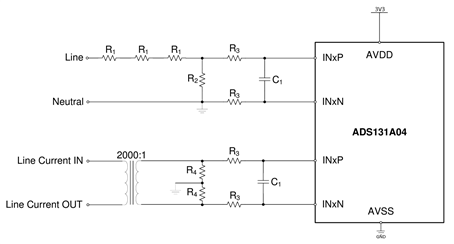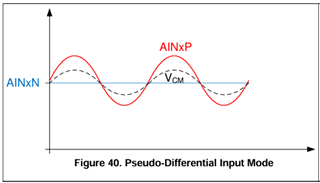Other Parts Discussed in Thread: TLV171
Tool/software:
Hello, everyone,
I'm working with the ADC converter ADS131A04 in unipolar analog power supply mode (3.3V) with negative charge pump enabled. The purpose of the work is to measure voltage and current, something very close to a power meter. The datasheet (SBAS590E) page 77 (1° LINK) shows the basic circuit I'm implementing. In this configuration, what would be the best configuration for additional external protection? My concern is the protection of the current analog inputs, I'm reading values from a CT (1:2000). In another reference designer page (2°LINK) the TVS0500DRVR is placed but the breakdown voltage is in the 5V range. With this voltage the ADS131A04 can be damaged because the maximum voltage at the analog input is 3.6V. Am I right? Which other TVS would you recommend for my application?
1° LINK

2° LINK

Thanks for your help,
Alanderson




